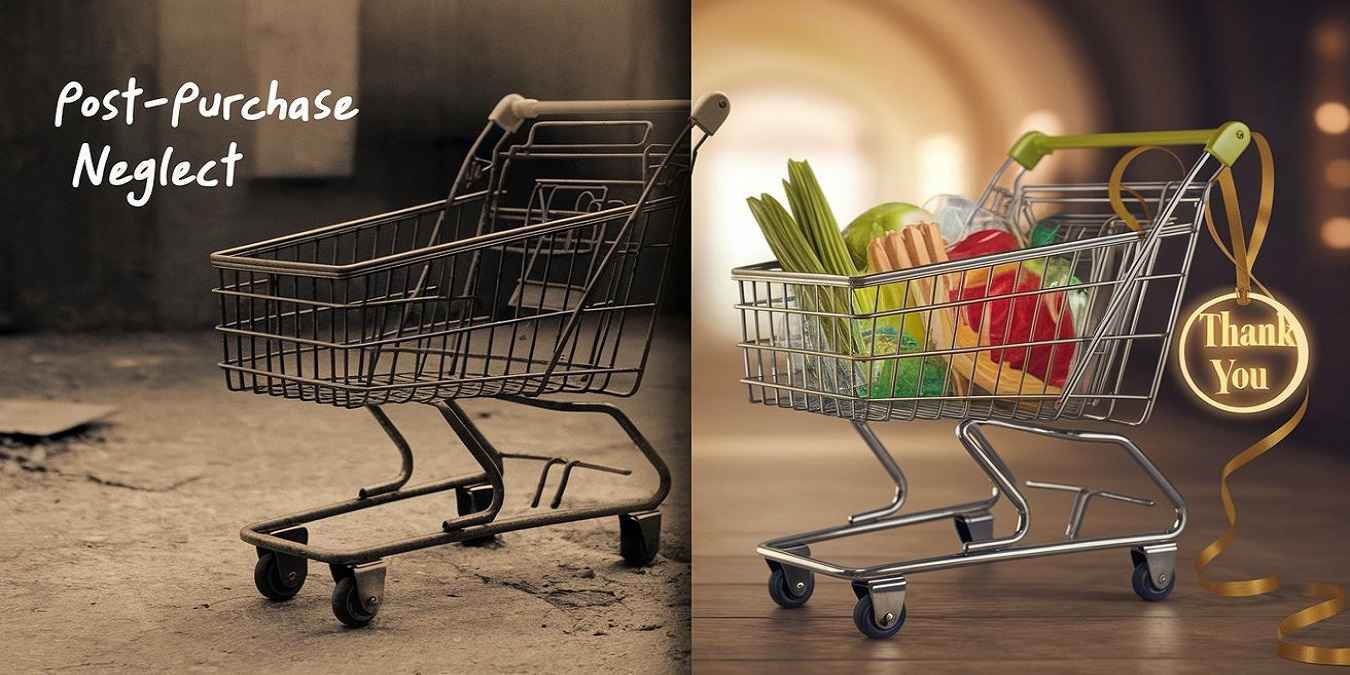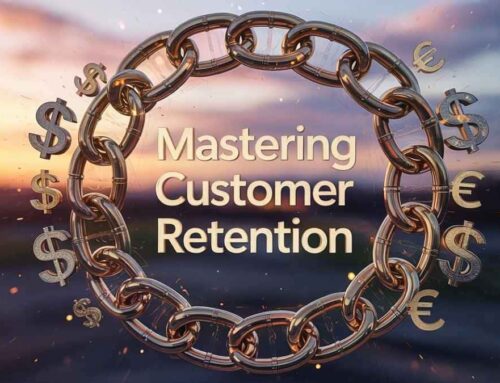
Post-Purchase Neglect?
You’ve just made a sale. The customer clicked “Buy,” and your team celebrated another conversion. But wait, what happens next? For many businesses, the answer is… silence. No follow-up, no gratitude, no support. Before you know it, that customer vanishes, leaving you wondering, “What went wrong?”
Post-purchase neglect is the silent killer of customer loyalty. It’s the gap between the excitement of a sale and the indifference of a forgotten client. If you’ve ever asked, “Why don’t customers come back?” this article is for you. Let’s dive into why post-purchase neglect happens, how to spot it and, most importantly, how to recover lost customers and turn them into lifelong advocates.
Why Post-Purchase Experience Matters More Than You Think
Imagine this: A customer buys your product, excited to use it. But days go by and they hear nothing from you. No thank-you email, no usage tips, no check-in to ensure they’re satisfied. How would you feel?
As Maya Angelou famously said, “People will forget what you said, people will forget what you did, but people will never forget how you made them feel.” The post-purchase phase is where emotions solidify into loyalty or resentment.
The stakes? High.
- Acquiring a new customer can cost 5-25x more than retaining an existing one (Harvard Business Review).
- Increasing customer retention by just 5% can boost profits by 25-95% (Bain & Company).
Neglecting customers after the sale isn’t just a missed opportunity, it’s a costly mistake.
The Telltale Signs of Post-Purchase Neglect
How do you know if your business is guilty of post-purchase neglect? Ask yourself:
- Do customers vanish after their first purchase?
- Are your retention rates plummeting?
- Are negative reviews citing “Lack of Support” or “Felt Ignored”?
If you answered “Yes” to any of these, your post-purchase strategy needs a reboot.
Step 1: Diagnose the Problem – Why Do Customers Leave?
Before solving post-purchase neglect, identify its root causes. Common culprits include:
- No follow-up: Silence after the sale.
- Poor onboarding: Customers don’t know how to use your product.
- Lack of support: Queries go unanswered.
- No loyalty incentives: No reason to return.
Ask yourself: “Would I feel valued if I were treated this way?”
Step 2: Re-Engage with Personalized Outreach
The fix starts with reconnecting. Here’s how:
- Send a Thank-You That Feels Human
A generic “Thanks for your purchase!” email won’t cut it. Instead:
- Personalize: Use their name and reference their purchase.
- Add value: Include a video tutorial, discount for their next order or a link to a customer community.
Example: “Hi Sarah, we’re thrilled you chose our coffee maker! Here’s a quick video to help you brew the perfect cup. P.S. Use code COFFEELOVE for 15% off your next order!”
- Ask for Feedback (and Act on It)
Send a follow-up survey 7-14 days post-purchase. Keep it short:
- “How would you rate your experience?”
- “What could we improve?”
Pro tip: Use tools like Typeform or SurveyMonkey to automate this.
Step 3: Create a Post-Purchase Journey That Wows
Don’t let the relationship end at “Thank You.” Build a journey that nurtures loyalty:
- Onboarding Sequences
Educate customers on getting the most from their purchase. For SaaS products, this could be a series of tutorials. For physical goods, share care instructions or creative uses.
- Loyalty Programs
Reward repeat purchases. Starbucks’ rewards program, for example, offers free drinks and birthday perks, keeping customers hooked.
- Exclusive Offers
Surprise loyal customers with early access to sales or VIP discounts.
Step 4: Win Back Lost Customers with Strategic Re-Engagement
Not all lost customers are gone forever. Use these tactics to recover them:
- Retargeting Ads
Use Facebook or Google Ads to remind customers of your brand. Example: “We miss you! Enjoy 20% off your next order.”
- Personalized Email Campaigns
Segment your list based on purchase history. Send tailored offers to those who haven’t bought in 6+ months.
- “We’re Sorry” Gestures
If a customer had a bad experience, send a heartfelt apology with a discount or free gift.
Case Study: How Zappos Turned Neglect into Loyalty
Zappos, the online shoe giant, is legendary for its customer service. When a customer complained about a delayed order, Zappos didn’t just apologize, they overnighted the shoes for free and included a bouquet of flowers. The result? A lifelong customer and viral word-of-mouth praise.
Lesson: Going above and beyond fixes neglect and builds legends.
The Secret Sauce: Consistency
As a customer experience expert says, “Customer loyalty isn’t won in a single transaction. It’s earned in every interaction.”
Avoid neglect by:
- Training your team to prioritize post-purchase care.
- Automating follow-ups without losing a personal touch.
- Continuously gathering and acting on feedback.
Your Action Plan to Recover Lost Customers
Ready to turn post-purchase neglect into a loyalty engine? Start here:
- Audit your current process: Are you sending follow-ups? Offering support?
- Map the customer journey: Identify gaps post-purchase.
- Test re-engagement campaigns: Start small with email retargeting.
- Measure results: Track retention rates and adjust strategies.
Conclusion: Turn Post-Purchase Neglect Into Loyalty Gold
Ignoring customers after they buy is like planting a tree and refusing to water it. Post-purchase neglect starves your business of growth, but recovery is within reach. By staying engaged, personalizing interactions and showing customers they matter, you’ll not only recover lost buyers, you’ll build a tribe of raving fans.
Ready to stop the bleed? Start today: Audit your post-purchase strategy, send that “We miss you” email and watch loyalty and revenue soar.
FAQs
Q: What is post-purchase neglect?
A: Post-purchase neglect occurs when businesses fail to engage customers after a sale, leaving them feeling ignored through lack of follow-up, support or personalized communication. This oversight can damage loyalty and drive customers away.
Q: How does post-purchase neglect affect customer retention?
A: Neglecting customers after a sale increases churn rates. Studies show retaining existing customers is 5-25x cheaper than acquiring new ones and even a 5% boost in retention can spike profits by up to 95%.
Q: What are the signs that a customer feels neglected?
A: Key signs include no repeat purchases, negative reviews citing poor support and low engagement with your brand post-sale. If customers vanish after one transaction, neglect is likely a factor.
Q: How can I re-engage customers who haven’t made a repeat purchase?
A: Use personalized email campaigns, exclusive discounts or loyalty rewards. For example, send a tailored offer with a message like, “We miss you! Here’s 20% off your next order.”
Q: What’s the best way to ask for customer feedback after a sale?
A: Send a short, friendly survey 7-14 days post-purchase. Ask simple questions like, “How did we do?” or “What could we improve?” Tools like Typeform can automate this process.
Q: How do loyalty programs help recover lost customers?
A: Loyalty programs incentivize repeat purchases by rewarding points, exclusive perks or early access to sales. Brands like Starbucks use this strategy to keep customers coming back.
Q: Can personalized emails really win back lost customers?
A: Yes! A study by Experian found personalized emails deliver 6x higher transaction rates. Mention their name, past purchases and include a relevant offer to reconnect.
Q: What’s an example of a successful customer recovery strategy?
A: Zappos once resolved a delayed order by overnighting shoes for free and including flowers. The gesture turned a dissatisfied customer into a lifelong advocate.
Q: How soon after a purchase should I follow up with a customer?
A: Send a thank-you email within 24 hours of purchase, followed by a feedback request 7-14 days later. Avoid spamming, focus on timely, value-driven touchpoints.
Q: What role does employee training play in preventing neglect?
A: Employees are the face of your brand. Train them to prioritize empathy, active listening and proactive support to ensure customers feel valued at every stage.















Hello! I hope you’re having a great day. Good luck :)